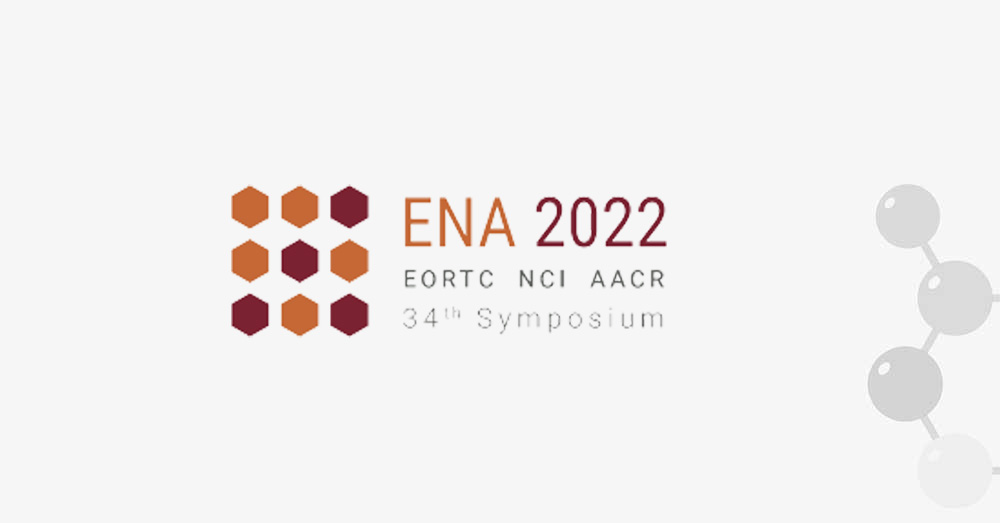Barcelona, Spain: Researchers have found that a drug that targets the key, cancer-causing gene, MYC, has for the first time been able to inhibit the function of the gene in a phase I clinical trial. Until now, no other drug has been able to do this safely and effectively.
Presenting preliminary results from the trial at the 34th EORTC-NCI-AACR [1] Symposium on Molecular Targets and Cancer Therapeutics in Barcelona, Spain, Dr Elena Garralda, Director of the Early Drug Development Unit at Vall d’Hebron Institute of Oncology (VHIO) in Barcelona, and a member of the scientific committee for the meeting, said: “MYC is one of the ‘most wanted’ targets in cancer because it plays a key role in driving and maintaining many common human cancers, such as breast, prostate, lung and ovarian cancer. To date, no drug that inhibits MYC has been approved for clinical use.”
Scientists from VHIO developed a mini-protein called OMO-103 that can enter cells and reach the nucleus. In experiments in the lab and in mice, they had shown that it successfully inhibited the ability of MYC to promote tumour growth by blocking MYC’s function of controlling the flow of information from many common genetic mutations found in cancer.
Starting in April 2021 Dr Garralda, in collaboration with two other Spanish sites, enrolled 22 patients to a phase I clinical trial to assess the safety of OMO-103 and to see if there were any early signs of it controlling cancer. The patients had a range of solid tumours, including pancreatic, bowel, and non-small cell lung cancers. They had all been heavily pre-treated, having received between three and 13 other treatments previously.
OMO-103 was given intravenously once a week at six dose levels ranging from 0.48 to 9.72 mg per kg of patient weight. The researchers took biopsies from the tumours at the start of the study and after three weeks of treatment to assess levels of MYC gene activity and other biological indicators for cancer.
By 10 October 2022 [2], eight out of 12 patients who had CT scans after nine weeks had stable disease, with the treatment having stopped the cancer growing. Of these, two had pancreatic cancer, three had colon cancer, one had non-small lung cancer, one had a sarcoma and one had a salivary gland cancer.
Dr Garralda said: “It’s still very early days to assess activity of the drug, but we are seeing stabilisation of disease in some patients. Remarkably, one patient with pancreatic cancer stayed on the study for over six months, his tumour shrank by eight per cent and there was a reduction in tumour-derived DNA circulating in the blood stream. The patient with a salivary gland tumour has stable disease and is still in the study after 15 months.
“The most exciting thing is that biological markers show that we are targeting MYC successfully. In addition, the adverse side effects are mostly mild, which is important when we start to think about next steps and combining OMO-103 with chemotherapy or other therapies.”
The most common treatment-related adverse side effects were mild reactions to the intravenous infusion, such as chills, fever, nausea, rash and low blood pressure. Higher dose levels were associated with more reactions to the infusion but were easily treated. Inflammation of the pancreas was the only dose-limiting reaction, which occurred in one patient.
Analysis of how OMO-103 was absorbed and processed in the body indicated that it remained for at least 50 hours in blood serum.
“We have experimental evidence that this could be a significant underestimate of how long the drug remains in the tumour. Evidence from our work in mice suggest drug concentrations in the tumour that are at least four-fold higher than in the blood,” said Dr Garralda. “In addition, even after long-term treatment, we could not detect any anti-drug antibodies, which can decrease the amount of drug available and therefore make it less effective.”
She concluded: “OMO-103 is the first MYC inhibitor to successfully complete a phase I clinical trial and to be ready to proceed to a phase II trial. We have determined the recommended dose for phase II to be 6.48mg/kg.”
Dr James L. Gulley is co-chair of the 34th EORTC-NCI-AACR Symposium for the NCI and Director of the Medical Oncology Service, Center for Cancer Research, NCI, USA, and was not involved in the research. He said: “MYC plays an important role in many cell-signaling pathways that promote a range of different cancers but has long been perceived as an ‘undruggable’ target. Researchers have spent much time and energy on the search for drugs that target MYC successfully but it has proved hard to develop therapies that are effective but don’t have side effects that are too severe for patients to tolerate. These results showing that patients typically experienced mild adverse side effects to OMO-103 are important when considering next steps and how it might be combined with chemotherapy. We look forward to the results from the phase II trial with interest.”
Abstract no: 7, “Dose escalation study of OMO-103, a first in class Pan-MYC-Inhibitor in patients (pts) with advanced solid tumors”, Elena Garralda, presented in the ‘New drugs on the horizon’ session, 11.30-13.00 hrs CEST, Friday 28 October.
[1] EORTC [European Organisation for Research and Treatment of Cancer, NCI [National Cancer Institute], AACR [American Association for Cancer Research]. The Symposium takes place in Barcelona from 26-28 October 2022.[2] These are the latest, updated results.
The study was funded by Peptomy-SL and by funding from the SME Instrument phase II within the EU’s Horizon 2020 programme.



